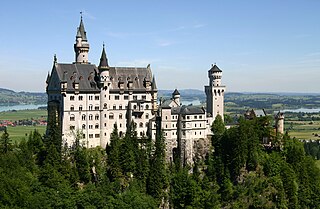 W
WThe culture of Germany has been shaped by major intellectual and popular currents in Europe, both religious and secular. Historically, Germany has been called Das Land der Dichter und Denker.
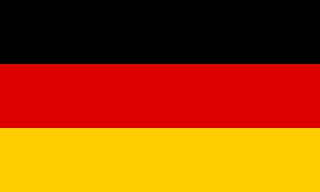 W
W W
WThe Berlinka ('Berliner'), also depozyt berliński and Pruski skarb, is the Polish name for a collection of German original manuscripts originally kept at the Prussian State Library in Berlin, which since the end of World War II are held by the Jagiellonian Library in Kraków. The legal status of the documents is subject of an ongoing debate.
 W
WThe Blutritt is an equestrian procession in honor of a relic containing the blood of Jesus Christ. There are several cities in Germany holding Blutritte, however, the dates are not unified.
 W
WThe Bullerby Syndrome is a term referring to an idealization of Sweden, which may occur in German-speaking Europe. It consists of a stereotype image of Sweden with usually positive associations, including wooden houses, clear lakes, green forests, moose, people with blond hair, happy people and midsummer sunshine. The term comes from Astrid Lindgren's The Six Bullerby Children books, set in rural Sweden.
 W
WThe Deo Gracias Fresco in the Heiligen Geist Kirche (1326) in Wismar is a fresco that depicts a mathematical-logical puzzle made up of letters. The Latin phrase Deo Gracias can be read in 504 ways. In a hospital church, the riddle can be understood both as a praise to God and as a remedy. The representation of praise as a puzzle and a learning aid for abstract thinking is unusual and therefore valuable. It is so far unique in Germany.
 W
WWas ist des Deutschen Vaterland is a German patriotic song by Ernst Moritz Arndt (1813) which was popular in the 19th century.
 W
WDer Deutsche Michel is a figure representing the national character of the German people, rather as John Bull represents the English. He originated in the first half of the 19th century.
 W
WDeutschtum is a German term equating to "Germanness". It may either refer to the German character and spirit, the belonging and yearning to the German people or the entirety of German ethnic groups residing in foreign countries. An anti-Western concept of a romanticized Deutschtum has been an important component of German nationalism, when the conceptions of Volk (people) and Gemeinschaft (community) were driven to their extremes during the Third Reich.
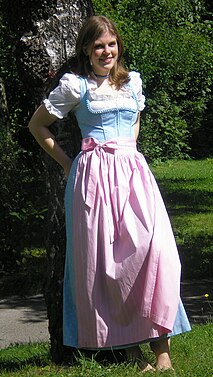 W
WA dirndl (German: [ˈdɪʁndl̩] , is the name of a feminine dress which originated in German-speaking areas of the Alps. It is traditionally worn by women and girls in southern Germany, Austria, Liechtenstein, Switzerland and Alpine regions of Italy. A dirndl consists of a close-fitting bodice featuring a low neckline, a blouse worn under the bodice, a wide high-waisted skirt and an apron.
 W
WA Eurogame, also called a German-style board game, German game, or Euro-style game, is a class of tabletop games that generally has indirect player interaction and abstract physical components. Eurogames are sometimes contrasted with American-style board games, which generally involve more luck, conflict, and drama. They are usually less abstract than chess or Go, but more abstract than wargames. Likewise, they generally require more thought and planning than party games such as Pictionary or Trivial Pursuit.
 W
WGerman collective guilt refers to the notion of a collective guilt attributed to Germany and its people for perpetrating the Holocaust and other atrocities in World War II.
 W
WGerman Expressionism (cinema) consisted of a number of related creative movements in Germany before the First World War that reached a peak in Berlin during the 1920s. These developments in Germany were part of a larger Expressionist movement in north and central European culture in fields such as architecture, dance, painting, sculpture and cinema. This article deals primarily with developments in German Expressionist cinema before and immediately after World War I, approximately from 1910 to the 1930s.
 W
WGerman philosophy, here taken to mean either (1) philosophy in the German language or (2) philosophy by Germans, has been extremely diverse, and central to both the analytic and continental traditions in philosophy for centuries, from Gottfried Wilhelm Leibniz through Immanuel Kant, Georg Wilhelm Friedrich Hegel, Arthur Schopenhauer, Karl Marx, Friedrich Nietzsche, Martin Heidegger and Ludwig Wittgenstein to contemporary philosophers. Søren Kierkegaard is frequently included in surveys of German philosophy due to his extensive engagement with German thinkers.
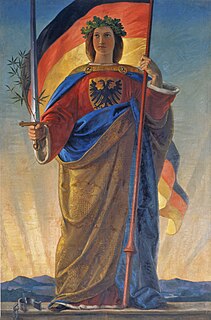 W
WGermania is a painting created at the end of March 1848 during the Revolutions of 1848. This allegorical figure is represented with the Reichsadler, oak leaves, an olive branch, and a banner.
 W
WA Germanophile, Teutonophile or Teutophile is a person who is fond of German culture, German people and Germany in general or who exhibits German patriotism in spite of not being either an ethnic German or a German citizen. The love of the German way, called "Germanophilia" or "Teutonophilia", is the opposite to Germanophobia.
 W
WHamburger Speck is a type of candy made out of foamed sugar with various coatings. The candy's colors are often the same as the colors of Hamburg's flag, with a white central square and two red outer squares. The name refers to the candy's similarity in appearance with bacon. The version "Helgoländer Speck" or "Helgoländer Schnitten" uses the colors of Heligoland and is red, white and green.
 W
WCalling „Helga!“ is a running gag at German concerts and festivals.
 W
WKegel, or kegeln, is a German bowling game, in which a player rolls a wooden or plastic ball along a smooth, hard indoor lane. The object of the game is to knock down the nine kegels at the other end of the lane. Kegel is a German derivative of European nine-pin bowling and is therefore closely related to its American counterpart, and bear similar elements to the traditional ten-pin bowling. It was also introduced to South Australia by German settlers in the 19th century and remains popular in areas in which many German people settled, such as the Barossa Valley.
 W
WThe official language of Germany is Standard German, with over 95 percent of the country speaking Standard German or German dialects as their first language. This figure includes speakers of Northern Low Saxon, a recognized minority or regional language that is not considered separately from Standard German in statistics. Recognized minority languages have official status as well, usually in their respective regions.
 W
WLebensreform was a social movement in the late 19th-century and early 20th-century German Empire and Switzerland that propagated a back-to-nature lifestyle, emphasizing health food/raw food/organic food, vegetarianism, nudism, sexual liberation, alternative medicine, and religious reform, and at the same time promoted abstention from alcohol, tobacco, drugs, and vaccines.
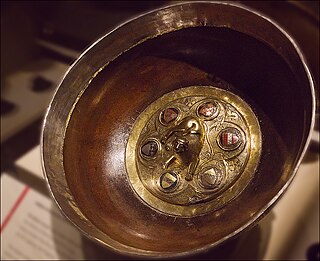 W
WA mazer is a special type of wooden drinking vessel, a wide cup or shallow bowl without handles, with a broad flat foot and a knob or boss in the centre of the inside, known technically as the print or boss. They vary from simple pieces all in wood to those ornamented with metalwork, often in silver or silver-gilt. They use dense impervious woods such as maple, beech and walnut wood. They are a north European medieval tradition, mostly made from the 11th to the 16th centuries.
 W
WMudflat hiking is a recreation enjoyed in the Netherlands, northwest Germany and in Denmark. Mudflat hikers are people who, with the aid of a tide table, use a period of low water to walk and wade on the watershed of the mudflats, especially from the Frisian mainland coast to the Frisian islands.
 W
WBecause of Germany's long history as a non-united region of distinct tribes and states before 1871, there are many widely varying names of Germany in different languages, more so than for any other European nation. For example, in the German language, the country is known as Deutschland from the Old High German diutisc, in Spanish as Alemania and in French as Allemagne from the name of the Alamanni tribe, in Italian as Germania from the Latin Germania, in Polish as Niemcy from the Protoslavic nemets, and in Finnish and Estonian as Saksa and Saksamaa respectively from the name of the Saxon tribe.
 W
WNative Americans in German popular culture have been an important cultural motif since the late 18th century.
 W
WPresstoff is the German-language term for a type of ersatz or artificial leather used during the first half of the 20th century. Made of specially layered and treated paper pulp, Presstoff was durable and easily adapted to be used in place of leather, which under wartime conditions was rationed. First invented in the 19th century, it gained its widest use in Germany during the Second World War.
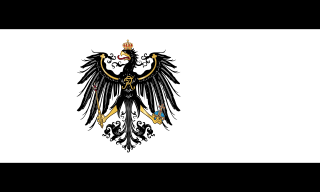 W
WPrussianism comprises the practices and doctrines of the Prussians; specifically, the militarism and the severe discipline traditionally associated with the Prussian ruling class.
 W
WSchwabenhass is a neologism referring to the aversion to the approximately 300,000-strong Swabian diaspora in Berlin and elsewhere in Germany outside of Swabia. In 2013, the so-called Spätzle-streit gained nationwide attention.
 W
W"Weißwurstäquator" is a humorous term describing the supposed cultural boundary separating Southern Germany from the North, especially Bavaria from Central Germany.
 W
WThe Internationaler Sekttag, Weltsekttag or Sekttag is celebrated on 9 April, occasionally also upon other days, mainly amongst German-speaking students and members of German Student Corps and Studentenverbindungen in general.
 W
WWhaling is the process of hunting of whales for their usable products such as meat and blubber, which can be turned into a type of oil which became increasingly important in the Industrial Revolution. It was practiced as an organized industry as early as 875 AD. By the 16th century, it had risen to be the principal industry in the coastal regions of Spain and France. The industry spread throughout the world, and became increasingly profitable in terms of trade and resources. Some regions of the world's oceans, along the animals' migration routes, had a particularly dense whale population, and became the targets for large concentrations of whaling ships, and the industry continued to grow well into the 20th century. The depletion of some whale species to near extinction led to the banning of whaling in many countries by 1969, and to a worldwide cessation of whaling as an industry in the late 1980s.